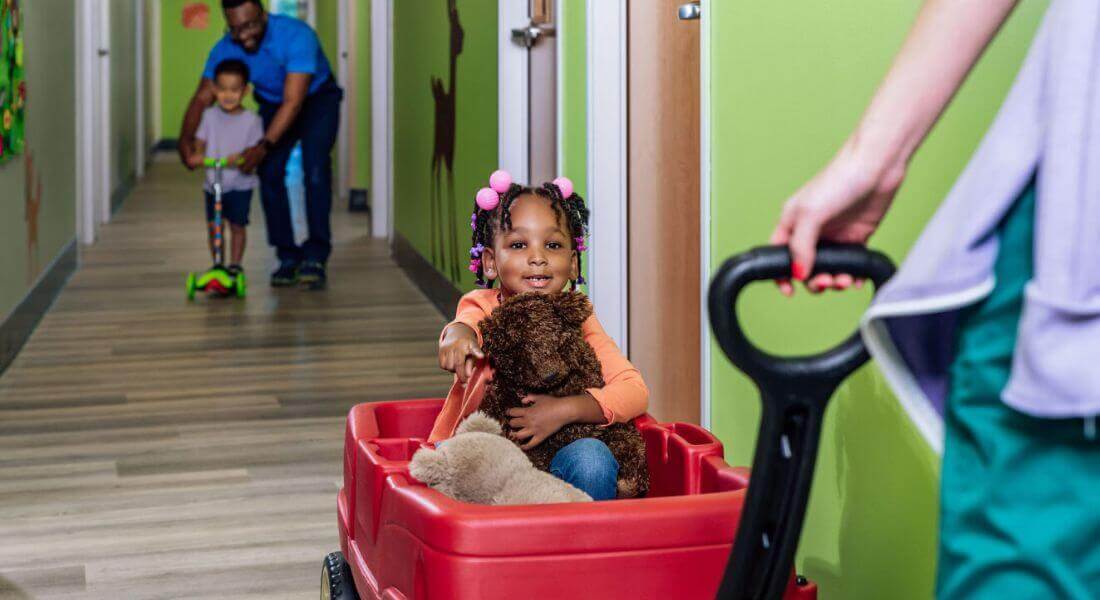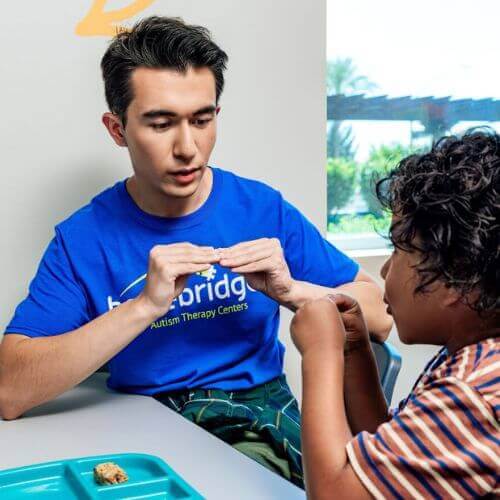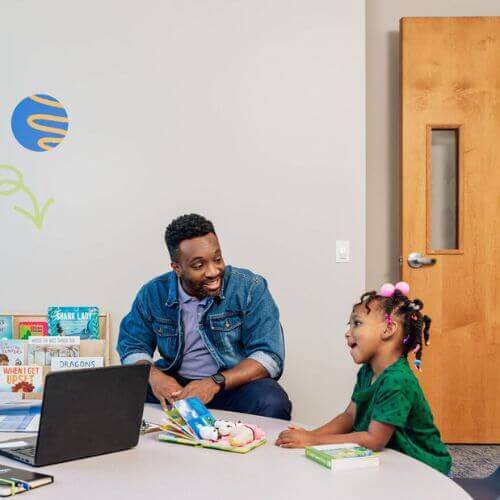Why Focusing on Self-Advocacy During Therapy is Important
September 22, 2023
September 22, 2023

As adults, we often forget that humans are not inherently verbal beings from the get-go. It’s a learned process. Vocal-verbal language is also just one of many ways to communicate.
“It’s easy to assume that because a child is non-speaking, that they don’t have anything to say. That’s never true,” reminds Ashley Marshall, the speech pathology clinical specialist at Hopebridge.
Babies cry when they want more milk, toddlers protest when they don’t want to brush their teeth, and kids groan when they don’t want to go to bed. These are all forms of communication. These are also signs of self-advocacy.
The challenge arises when caregivers, families and other communication partners are not able to interpret a child’s cues, whether because they are not yet vocal-verbal, or they have trouble putting their feelings, wants and needs into words.
As clinicians, this is where we can step in to support children in their learning to self-advocate. Through a child-centric approach, we can help them unlock new forms of communication, plus give families the understanding to serve as strong communication partners for them.
“When I was a young clinician, I used to say that I wanted to be the voice for those who didn’t have one. Within the past several years, I changed that rhetoric in my own terminology. Rather than be their voice, I want to help them find their own voice,” said Hopebridge Chief Science Officer Adam Hahs, PhD, BCBA-D. “It’s important that my voice does not take the place of their voice.”
Adam notes that while the difference is small in terms of what a sentence looks like, this is a massive distinction. This pivot is also one that has had a great effect on the world of applied behavior analysis (ABA) and speech therapy as a whole, as the practice of our services is meant to create a context in which children can find their own voice.

“At Hopebridge, we take a total communication approach with our kids, as that is what is natural for all humans. Throughout our day, we’re constantly gesturing, using facial expressions, writing things down, speaking, and using pictures and devices … why wouldn’t we allow our kids to do the same?” said Ashley.
By focusing on self-advocacy skills, we not only help kids find their voice, but also help caregivers better recognize their child’s communication style.
“There are a lot of strengths in recognizing that we all communicate differently. No method is the right or wrong way. We are inclusive and accepting of all communication styles, and we help the families we work with better understand their child’s own style,” said Hopebridge VP of Outpatient Services Alissa Hayes.
To wave or voice ‘hello’ mean the same thing. The ability to communicate even at that basic level is integral to an individual’s ability to have a two-way conversation, shared experiences and relationships. Having these skills also comes into play so they can express when they do not like something.
Sometimes, a therapy goal is built around a seemingly small gesture that makes a big impact. Alissa remembers a child who worked on pointing, which ended up being a big communication tool for him.
Adam thought back to a similar experience with a teen he worked with in a different high-risk educational setting. This child had autism spectrum disorder (ASD), cerebral palsy, intellectual disability and a limited vocal-verbal repertoire. If he wanted to leave a room, get an item or gain someone’s attention, his go-to response would be to physically aggress. He was affected so much by disabilities that Adam and his team had to start at a basic level to provide reinforcement for a safer response.
To support his communication, the team worked with him on a functional communication replacement behavior. Simply put, they taught him to tap on the shoulder rather than hit. The other person would then turn around and say, “What can I help you with?” At which point, the teen would point or kindly grab their hand to lead them in the direction.

This had an immense impact on not only the boy’s life, but also on his family’s, as they had considered residential placement for safety reasons. His mother came to Adam’s team in tears, letting them know that if it had not been for their efforts, they would not have gotten to see how great of a kid he is—and all of it is because he learned to tap on the shoulder.
“When we think about it behavior analytically, a tap on the shoulder is no different than someone saying, ‘I want to spend a summer sitting on the beach in Belize,’ if it gets them what they want. They are functionally the same. We don’t particularly mind what it looks like – so long as it’s safe – we care that it’s pragmatic or ‘works’ for them,” said Adam.
Self-advocacy is a two-way street, as it includes what you want more of and what you want less of. Within speech and ABA, our clinicians intentionally target requesting for items, preferred activities and breaks, which are all part of self-advocacy, but they also cover the flip side: negation.
“Teaching ‘no’ is a really powerful response; maybe as important or more so than ‘yes.’ We want kids to let us know when they don’t want something. In doing so, we can create a more robust, thorough repertoire for our kids,” said Adam.
If you look anecdotally at children – with or without a diagnosis of autism – the majority of their first words include “no.” There’s a reason for that. Kids constantly hear their parents say it. “No” is part of our core vocabulary and has many meanings. Whether saying it out loud, signing “all done,” waving goodbye, or pushing items away, it all means no.
“We each have a threshold to hit and don’t know what that feels like for our kids. Are they overwhelmed? We need to give them the opportunity to chill out for a second. They are not trying to be ‘non-compliant’ and it doesn’t mean they will never do it. They are simply letting us know they want to stop for that moment,” said Ashley.
“The amount of overall behavior that decreases when kids are able to communicate a termination request is incredible. Letting us know ‘I’m done,’ is so impactful. The kids get to be an active participant in their day.”
At Hopebridge, we want more clinicians like you who are want to help children live their best lives and share their voices. If working in a place that values our science, clinical outcomes, career development, and most importantly, our kids’ health, consider a job with Hopebridge at one of our therapy centers. Check out open positions across the country so you can make an impact by helping a child find their voice.
*Informed consent was obtained from the participants in this article. This information should not be captured and reused without express permission from Hopebridge, LLC. Testimonials are solicited as part of an open casting call process for testimonials from former client caregivers. Hopebridge does not permit clinical employees to solicit or use testimonials about therapeutic services received from current clients (Ethics Code for Behavior Analysts 5.07-5.08; BACB, 2020). Hopebridge does not provide any incentives, compensation, or renumeration for testimonials provided by a former client or client caregiver.
Autism Therapy
April 01, 2023
1 in 36 Children Have Autism: What the Increased Prevalence Means for Your Family
Autism Therapy
July 29, 2024
Hopebridge Partners with EarliPoint Health to Provide Objective Autism Assessment for Babies and Toddlers
Autism Therapy
December 28, 2022
Hopebridge Gives More Than 5,600 Free CEUs to its BCBAs in 2022